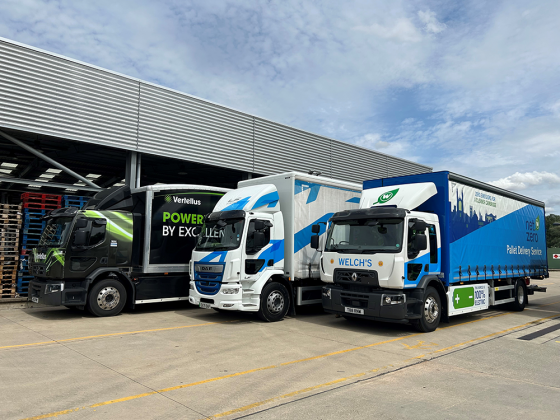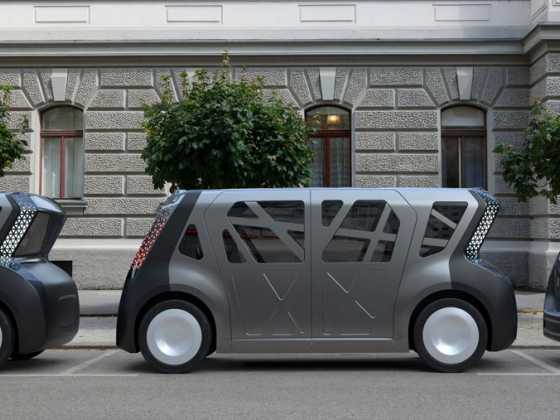A fleet fueled by human power
Looking to cut staff travel costs and carbon emissions? With the help of tax breaks and training, you could be on your way to starting a new, healthy cycling fleet, says Duncan Pickering, IAM Drive & Survive’s cycling manager
 The two scariest things I’ve done in my life are scaling sheer cliff face in the Italian Dolomites and navigating the Chiswick roundabout on my bike. Both adrenaline-fueled. Both dangerous. The chances are that if you tell someone you cycle to work they will look at you like you have a death wish. But just as training helped me scale a cliff face, it will make cycling employees safer.
The two scariest things I’ve done in my life are scaling sheer cliff face in the Italian Dolomites and navigating the Chiswick roundabout on my bike. Both adrenaline-fueled. Both dangerous. The chances are that if you tell someone you cycle to work they will look at you like you have a death wish. But just as training helped me scale a cliff face, it will make cycling employees safer.
These days I regularly cycle the 30 mile round trip from home in Staines to IAM house in Chiswick. And I am not the only new cycling commuter. Sky-high fuel prices have seen enormous growth in cycling to work and cycling for business.
Better on the purse
Cycling to work instead of driving or paying for public transport saves a lot of money. For example, commuters in London pay more than £25 for a weekly zone one and two pass to use the underground. Switching to pedal power would easily save them over £1,300 a year.
It’s the same for businesses. With 23 per cent of car trips being less than two miles, it makes sense for them to encourage cycling.
Firms with staff wellbeing and environmental policies actively promote cycling. We all need regular exercise and the truth is that most of us do not get enough. Cycling is much more convenient than joining a gym or going swimming and it is a regular exercise that can be easily slotted into most of our daily lives. It even makes us more productive – healthier staff are more alert and have greater concentration. And there’s no need to worry about arriving for work exhausted from the ride, as cycling commuter Ella Harvey of Canary Wharf Management explains: “When I arrive I’m better than when I take the train. I feel fresher and more alert. I’m in a better mood for work.
“The traffic makes cycling more challenging but I like the fact that I have to be constantly alert and I don’t take any unnecessary risks. My company encourages cycling. There are showers and places to lock your bike, it’s secure.”
Health and Safety
But companies need to address their cyclists’ health and safety just as they do their fleet drivers’.
Health and safety manager Paul Coster said: “Canary Wharf Management has 600 cyclists. There is added value in cycle training and we don’t want staff having accidents if they can be avoided. Our aim is to make sure that anything our staff do – in or out of work – is safe. We are even researching their cycling routes so we can get them into the area more safely.”
The government's cycle to work scheme has put well over half a million new bikes on the road, half of them ridden by new or returning cyclists. It works by staff paying for the bike tax-free over a loan period of one or two years. Employers benefit from lower tax as well. But with cycle to work the employer owns the bike until the loan is paid off. This means the same health and safety rules apply to the bikes as any other company equipment – making safety training essential.
It makes sense for employers to encourage cycling to and for work, and to make sure they are confident and safe cyclists.
Lucie Davis from Halfords cycle2work said: "I was a little apprehensive about heading out on the roads, having not done so before. But the session went at a good pace and I was really surprised how quickly my confidence grew as we went along. Never for a second did I think I'd manage hand signals either. I think it's an invaluable experience for anyone looking to road cycle."
IAM Drive & Survive’s cycle training is something that can help all of us, from the complete beginner to the experienced road rider.
Enhancing confidence
CycleCheck is for new and returning cyclists to have their abilities and skills checked in a safe off-road environment. It covers basic cycling including control, braking, changing gear and signalling to improve awareness and confidence.
CycleRide enhances confidence and security by encouraging assertive road positioning and awareness of other road users, including pedestrians. It takes place on the road.
CycleRide+ prepares cyclists for complicated challenges on the road such as negotiating multi-lane roundabouts.
Training takes place around the workplace so it takes into account local roads and conditions at any time of day, including lunchtimes and weekends.
The cycling safety method
• Give an unused bike an MOT. You can do this yourself or pay a cycle shop to do it.
• Get poll position at the lights. Wait at the front – the box with a white cycle symbol shows you where. Never wait on the left of lorries or buses. Make eye contact with drivers so they know you're there. If you can't get in front safely, wait behind.
• Never undertake a large vehicle at a junction. Never cycle on the left or near the front of large vehicles especially at a junction where there’s a left turn the driver can't see you.
• Consider your road positioning. Keep a door width's space between you and parked cars. If the road is too narrow for a vehicle to pass you then it may be safest to ride in the middle of the road and assert your position as a road user.
• Make yourself visible. In dull or dark conditions you must have a white front light and red tail light. Wear something bright or reflective so you can be seen more easily.
• Follow the rules of the road. Don't ride through red traffic lights and don't cycle on the pavement unless it is signed as a shared path. Remember that pedestrians always have priority on shared paths.
• Improve your confidence. If you feel the roads are a lot faster and busier than when you last cycled, invest in cycle training. This can really help you to understand how positioning and your riding style can make you safer and more visible.
• Wear a helmet. But don’t assume this is enough to keep you safe. Ride defensively and always make the assumption that you may not have been seen.
Hey, you in the lorry...
The risk to cyclists from large lorries turning left at junctions is well known, particularly in urban areas, says IAM Drive & Survive’s Simon Elstow.
In London, while lorries make up only five per cent of London traffic, they are involved in over half of cyclist fatalities. It‘s a similar story in other urban areas and let’s face it, a poorly-trained London lorry driver could easily be in Birmingham or Bristol in just a few hours.
While crashes are rare, they are nearly always serious or fatal. And with each road death costing £1.7 million there is a very good reason to stop the death toll, before we even think about the human tragedy.
Training cyclists is sensible and necessary but training professional drivers is essential. They have a legal responsibility to ensure the safety of other road-users, even unskilled cyclists.
Drivers should keep constant watch while approaching junctions, noting anything that might be moving into a position where they can't be seen. Blind spots don’t cause crashes; drivers do. If there is any doubt, the driver should behave as if there was a cyclist in the blind spot. If they turn carefully and slowly it will give the cyclist time to take action and the chances are the driver will spot the cyclist in the mirrors. Things like looking at route directions will draw attention from the road so drivers must allow for the fact that junctions are distracting for themselves and the cyclist.
Cyclist awareness must be part of every lorry driver’s continuous professional development. And cyclists should never undertake on the left. Especially at junctions.
About Cycle2Work
Cycle2Work is a Government tax break to encourage cycling to work. It means employees make huge savings on a new bike and safety accessories. Employers benefit too by encouraging a healthier workforce and by offering a tangible benefit to staff. More information is available at www.bike2workscheme.co.uk
For more information
www.iamdriveandsurvive.co.uk/cycling
0870 120 2910






